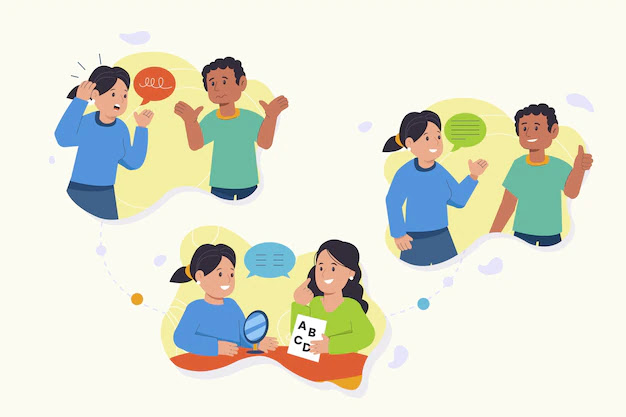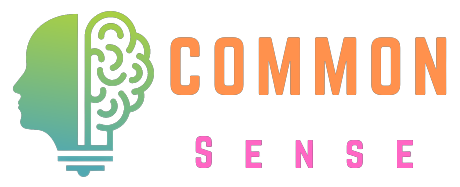
Non-Verbal Communication
I. Meaning of Non-Verbal Communication
Non-verbal communication means encompasses all forms of conveying information without words. It includes body language, facial expressions, gestures, posture, tone of voice, eye contact, and even the use of physical space. Often, non-verbal cues can be more powerful and revealing than spoken language.
II. The Power of Body Language
1. Facial Expressions: Our faces are incredibly expressive. A smile can convey warmth, happiness, and friendliness, while a furrowed brow may signal confusion or concern. Recognizing these expressions in others can help us better understand their emotional state.
2. Gestures: Hand movements and gestures vary across cultures but are universal in their ability to convey meaning. For example, a thumbs-up gesture is generally seen as a sign of approval, while crossing one's arms might indicate defensiveness or disagreement.
3. Posture: The way we carry ourselves communicates volumes. An upright, open posture often signifies confidence and approachability, while slouched shoulders may suggest fatigue or disinterest.
III. Voice and Tone
1. Tone of Voice: The tone in which words are spoken can completely alter their meaning. A friendly tone can make a request sound like a suggestion, while a stern tone can turn the same words into a command.
2. Pitch and Speed: The pitch and speed of speech can convey excitement, nervousness, or calmness. A fast-paced, high-pitched conversation might indicate enthusiasm, while a slow, monotone voice can signal boredom or indifference.
IV. Eye Contact
Eye contact is a powerful form of non-verbal communication. It can signify confidence, interest, or attentiveness. However, cultural norms vary regarding the appropriate level of eye contact, so it's essential to consider context.
V. Proxemics
Proxemics refers to the use of physical space in communication. For example, standing close to someone can denote intimacy or aggression, while maintaining a comfortable distance can indicate respect for personal boundaries.
VI. The Significance of Non-Verbal Communication
1. Enhancing Understanding: Non-verbal cues often clarify spoken words. They help us discern whether someone is being sincere, sarcastic, or insincere.
2. Emotional Expression: Non-verbal communication allows us to express emotions that may be challenging to put into words. A hug, for instance, can convey comfort and support better than any sentence.
3. Cultural Nuances: Understanding non-verbal communication is crucial in a globalized world. Different cultures have varying norms regarding body language, gestures, and eye contact. Misinterpreting these cues can lead to misunderstandings or offense.
VII. Miscommunication and Non-Verbal Signals
Misunderstandings often arise due to the misinterpretation of non-verbal signals. For example, a person might cross their arms because they are cold, not necessarily because they disagree with something. Such misinterpretations can lead to unnecessary conflicts.
VIII. Improving Your Non-Verbal Communication
1. Self-awareness: Start by observing your own non-verbal cues. Are you aware of your facial expressions, gestures, and posture? Understanding your own non-verbal tendencies can help you control and adjust them as needed.
2. Active Listening: Pay close attention to the non-verbal cues of others when you communicate. This not only helps you better understand them but also demonstrates that you are an attentive listener.
3. Cultural Sensitivity: Be mindful of cultural differences in non-verbal communication. When interacting with individuals from diverse backgrounds, take the time to learn about their cultural norms to avoid unintentional misunderstandings.
4. Practice: Like any skill, improving non-verbal communication takes practice. Engage in conversations, seek feedback, and make adjustments based on your observations and experiences.
IX. Non-Verbal Communication in Professional Settings
In professional environments, non-verbal communication plays a crucial role in conveying competence, confidence, and credibility. Here are some ways it comes into play:
1. Job Interviews: Interviewers assess candidates not only based on their responses but also on their body language. Maintaining good eye contact, a firm handshake, and attentive posture can make a positive impression.
2. Leadership and Management: Effective leaders use non-verbal cues to inspire and motivate their teams. A confident and composed leader can instill trust and confidence among employees.
3. Public Speaking: Public speakers often rely on non-verbal communication to connect with their audience. Gestures, facial expressions, and vocal tone can make a speech engaging and impactful.
X. Non-Verbal Communication in Relationships
In personal relationships, understanding non-verbal cues is essential for building and maintaining strong connections:
1. Conflict Resolution: During disagreements, paying attention to non-verbal signals can help resolve conflicts more effectively. It allows you to gauge the other person's emotions and respond empathetically.
2. Romantic Relationships: Non-verbal communication plays a significant role in romantic relationships. Holding hands, cuddling, and maintaining eye contact can foster intimacy and connection.
3. Friendships: Friends often communicate non-verbally, sharing inside jokes, knowing glances, and comforting gestures that strengthen their bond.
The Future of Non-Verbal Communication:
As technology evolves, so does the realm of non-verbal communication. Video calls and virtual reality are changing the way we convey non-verbal cues in the digital world. Emoticons, emojis, and GIFs have become digital substitutes for facial expressions and gestures.
Read More: Preparedness
Additionally, researchers are exploring the use of artificial intelligence to analyze non-verbal cues, which could have applications in healthcare, education, and customer service.

Non-verbal communication is a universal and powerful form of expression that transcends language barriers. Whether you're in a professional setting, nurturing personal relationships, or navigating the digital world, understanding and mastering non-verbal cues can greatly enhance your ability to connect, empathize, and communicate effectively with others. It's a silent language we all speak, and by becoming fluent in it, we can truly become better communicators and more perceptive individuals.
Ques 1: What is non-verbal communication?
Ans: Non-verbal communication refers to the transmission of information, thoughts, or emotions without the use of words. It includes body language, facial expressions, gestures, posture, tone of voice, eye contact, and the use of physical space. Non-verbal cues can convey emotions, intentions, and meaning, often complementing or contradicting verbal messages.
Ques 2: How does emotional awareness help you with non-verbal communication?
Ans: Emotional awareness enhances non-verbal communication by allowing individuals to recognize and interpret subtle emotional cues conveyed through facial expressions, body language, and tone of voice. When people understand their own and others' emotions, they can respond empathetically and adjust their non-verbal signals to convey understanding, empathy, and rapport effectively.
Ques 3: What percentage of communication is non-verbal?
Ans: Non-verbal communication makes up a significant portion of human interaction, often cited as comprising about 70-93% of communication, depending on the study and context. It encompasses body language, facial expressions, gestures, tone of voice, and other non-verbal cues that convey meaning and emotions alongside spoken words.
Ques 4: How much of language is made up of non-verbal communication?
Ans: Non-verbal communication complements spoken language, enhancing understanding and emotional expression. While estimates vary, it's generally believed that non-verbal cues make up a substantial part of human communication, contributing significantly to the effectiveness and depth of interpersonal interactions.
Ques 5: How does personal appearance helps in non- verbal communication?
Ans: Personal appearance plays a role in non-verbal communication by conveying information about an individual's identity, status, and personality. Clothing choices, grooming, and accessories can project professionalism, cultural affiliation, or personal style, influencing how others perceive and interact with the person, ultimately impacting communication dynamics and social interactions.

Conclusion
Non-verbal communication is a universal and powerful form of expression that transcends language barriers. Whether you're in a professional setting, nurturing personal relationships, or navigating the digital world, understanding and mastering non-verbal cues can greatly enhance your ability to connect, empathize, and communicate effectively with others. It's a silent language we all speak, and by becoming fluent in it, we can truly become better communicators and more perceptive individuals.
FAQ
Ques 1: What is non-verbal communication?
Ans: Non-verbal communication refers to the transmission of information, thoughts, or emotions without the use of words. It includes body language, facial expressions, gestures, posture, tone of voice, eye contact, and the use of physical space. Non-verbal cues can convey emotions, intentions, and meaning, often complementing or contradicting verbal messages.
Ques 2: How does emotional awareness help you with non-verbal communication?
Ans: Emotional awareness enhances non-verbal communication by allowing individuals to recognize and interpret subtle emotional cues conveyed through facial expressions, body language, and tone of voice. When people understand their own and others' emotions, they can respond empathetically and adjust their non-verbal signals to convey understanding, empathy, and rapport effectively.
Ques 3: What percentage of communication is non-verbal?
Ans: Non-verbal communication makes up a significant portion of human interaction, often cited as comprising about 70-93% of communication, depending on the study and context. It encompasses body language, facial expressions, gestures, tone of voice, and other non-verbal cues that convey meaning and emotions alongside spoken words.
Ques 4: How much of language is made up of non-verbal communication?
Ans: Non-verbal communication complements spoken language, enhancing understanding and emotional expression. While estimates vary, it's generally believed that non-verbal cues make up a substantial part of human communication, contributing significantly to the effectiveness and depth of interpersonal interactions.
Ques 5: How does personal appearance helps in non- verbal communication?
Ans: Personal appearance plays a role in non-verbal communication by conveying information about an individual's identity, status, and personality. Clothing choices, grooming, and accessories can project professionalism, cultural affiliation, or personal style, influencing how others perceive and interact with the person, ultimately impacting communication dynamics and social interactions.







Do Leave Your Comment